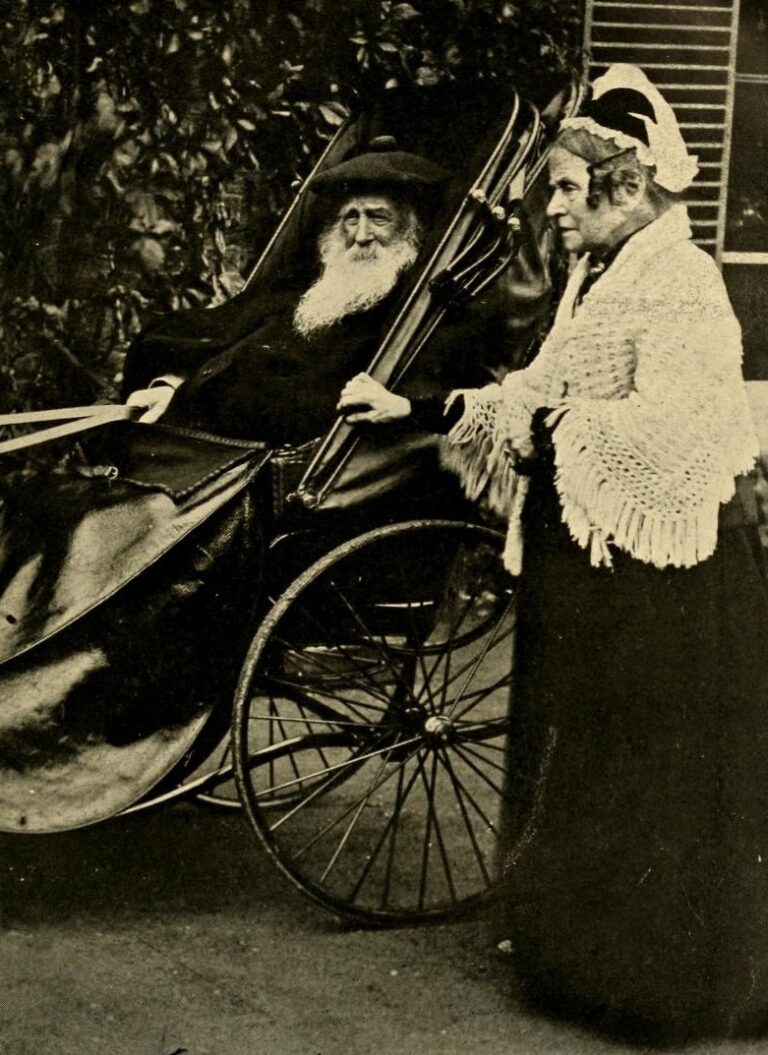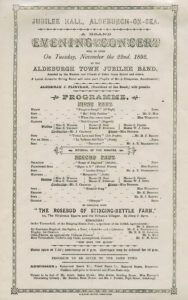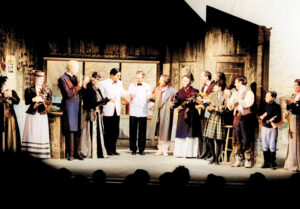A History of Aldeburgh Jubilee Hall
Situated in the picturesque coastal town of Aldeburgh, Suffolk, Aldeburgh Jubilee Hall is a historic venue that holds significant cultural and community importance. Its story dates back to the late 19th century, reflecting the charm and resilience of a town known for its artistic heritage.
The history of Aldeburgh Jubilee Hall began in 1887, during the Golden Jubilee celebration of Queen Victoria’s reign. To commemorate the occasion, the decision was made to construct a grand public hall that would serve as a multi-purpose gathering space for the town’s residents and visitors. Fundraising efforts were initiated, and generous donations from businesses and local residents, including Newson Garrett whose daughters Millicent and Elizabeth became famous as women’s rights activists, made the dream a reality.
A History of Aldeburgh Jubilee Hall
Situated in the picturesque coastal town of Aldeburgh, Suffolk, England, Aldeburgh Jubilee Hall is a historic venue that holds significant cultural and community importance. Its story dates back to the late 19th century, reflecting the charm and resilience of a town known for its artistic heritage.
The history of Aldeburgh Jubilee Hall began in 1887, during the Golden Jubilee celebration of Queen Victoria’s reign. To commemorate the occasion, the decision was made to construct a grand public hall that would serve as a multi-purpose gathering space for the town’s residents and visitors. Fundraising efforts were initiated, and generous donations from businesses and local residents, including Newson Garrett whose daughters Millicent and Elizabeth became famous as women’s rights activists, made the dream a reality.

Newson Garrett and his wife, Louisa,
in old age.

Newson Garrett and his wife, Louisa, in old age.
The hall was designed by the prominent architect Francis Brown, known for his elegant and functional structures. It was constructed in the Victorian style with red brick and white timber cladding, displaying a delightful blend of architectural elements that captured the essence of the era. The construction was completed in a relatively short period, and on 15th June 1888, the Aldeburgh Jubilee Hall was officially opened to the public with much fanfare and celebration.
In its early years, the hall became the heart of Aldeburgh’s social and cultural life. It hosted a wide range of events, from concerts and theatre performances to public meetings and balls. In 1909 it even served as a roller-skating rink. Local societies and clubs frequently utilised the space for gatherings, further strengthening the sense of community within the town.
The hall was designed by the prominent architect Francis Brown, known for his elegant and functional structures. It was constructed in the Victorian style with red brick and white timber cladding, displaying a delightful blend of architectural elements that captured the essence of the era. The construction was completed in a relatively short period, and on 15th June 1888, the Aldeburgh Jubilee Hall was officially opened to the public with much fanfare and celebration.
In its early years, the hall became the heart of Aldeburgh’s social and cultural life. It hosted a wide range of events, from concerts and theatre performances to public meetings and balls. In 1909 it even served as a roller-skating rink. Local societies and clubs frequently utilised the space for gatherings, further strengthening the sense of community within the town.

Evening concert programme
from 22nd November 1892

Evening concert programme from 22nd November 1892
As the 20th century progressed, Aldeburgh and the Jubilee Hall faced the challenges of two World Wars. During World War I, the hall was utilised for war-related activities, including fundraisers and recruitment drives. Throughout World War II, the hall served as a refuge for those displaced by bombings, providing a safe haven during a tumultuous time.
In the post-war years, Aldeburgh experienced a blossoming artistic scene that would become its defining characteristic. The Aldeburgh Festival, founded by composer Benjamin Britten and tenor Peter Pears in 1948, showcased classical music performances and nurtured the talents of many young musicians. The festival brought international attention to the town and the Jubilee Hall, cementing its reputation as a cultural hub.
As the 20th century progressed, Aldeburgh and the Jubilee Hall faced the challenges of two World Wars. During World War I, the hall was utilised for war-related activities, including fundraisers and recruitment drives. Throughout World War II, the hall served as a refuge for those displaced by bombings, providing a safe haven during a tumultuous time.
In the post-war years, Aldeburgh experienced a blossoming artistic scene that would become its defining characteristic. The Aldeburgh Festival, founded by composer Benjamin Britten and tenor Peter Pears in 1948, showcased classical music performances and nurtured the talents of many young musicians. The festival brought international attention to the town and the Jubilee Hall, cementing its reputation as a cultural hub.

Benjamin Britten taking a
curtain call on the Jubilee Hall stage
at the Aldeburgh Festival, June 1962

Benjamin Britten taking a curtain call on the Jubilee Hall stage at the Aldeburgh Festival, June 1962
Over the decades, the Jubilee Hall underwent several renovations and refurbishments to maintain its structural integrity and modernise its facilities. These efforts aimed to preserve its historical charm while ensuring it remains a versatile space for the evolving needs of the community.
In addition to its cultural significance, the hall holds memories cherished by generations of Aldeburgh’s residents. It has witnessed countless weddings, school events, fundraisers, and gatherings that have left an indelible mark on the town’s collective memory.
Today, Aldeburgh Jubilee Hall stands as a testament to the enduring spirit of a community that cherishes its history while embracing the future. Its rich past and ongoing role in shaping the town’s cultural landscape make it more than just a building; it symbolises the pride and unity of a town that has stood the test of time. As Aldeburgh continues to evolve, the Jubilee Hall remains a cherished landmark and an essential part of the town’s identity, preserving the legacy of the past while embracing the promise of tomorrow.
Over the decades, the Jubilee Hall underwent several renovations and refurbishments to maintain its structural integrity and modernise its facilities. These efforts aimed to preserve its historical charm while ensuring it remains a versatile space for the evolving needs of the community.
In addition to its cultural significance, the hall holds memories cherished by generations of Aldeburgh’s residents. It has witnessed countless weddings, school events, fundraisers, and gatherings that have left an indelible mark on the town’s collective memory.
Today, Aldeburgh Jubilee Hall stands as a testament to the enduring spirit of a community that cherishes its history while embracing the future. Its rich past and ongoing role in shaping the town’s cultural landscape make it more than just a building; it symbolises the pride and unity of a town that has stood the test of time. As Aldeburgh continues to evolve, the Jubilee Hall remains a cherished landmark and an essential part of the town’s identity, preserving the legacy of the past while embracing the promise of tomorrow.

The Mikado cast with orchestra playing
in the pit, October 2021

The Mikado cast with orchestra playing in the pit, October 2021